This is the third blog in the series of posts around Health Information Exchange, its importance, the role of technology in transforming the healthcare and keeping patients at the heart of the healthcare process. For anyone who missed, the link to previous posts are as follow:
Health Information Exchange: Reaching Last-Mile Patients Through Technology
Health Information Exchange In Developing Nations: Why IT Matters?
Blockchain and Patient Centricity
Missing Patient Centricity has long been a gap in the healthcare delivery model, especially in developing countries like India. Most of the global economies shifting to preventative care is a glimpse to the transitioning healthcare model where patients are in a driving seat and have control over their data. The success of this new delivery model hinges upon the interoperability of the healthcare ecosystem in a semi/full decentralized environment enhancing trust, transparency, and security.
Blockchain, based on its unique features, has a key role to play in transforming the healthcare delivery model towards patient centricity. The biggest advantage that blockchain has is its ability to establish trust among the ecosystem stakeholders in a transparent, secure, seamless environment. Blockchain combined with IoT devices has the ability to digitize the lifecycle of any individual all the way since birth.
Participation from all the ecosystem stakeholders is required to map the health information of every individual.
Blockchain Use Cases Towards Creating A Connected Ecosystem
To understand each of the use cases it’s important to understand the healthcare lifecycle of an individual. From birth to death, healthcare lifecycle could be broadly classified into two categories as listed below:
- Planned or Known Healthcare Activities
- Unplanned or Unknown Healthcare Activities
What does a typical healthcare lifecycle look like?
Birth —————-> Planned/Known Care ————–> Unplanned/Unknown Care ——————> Death
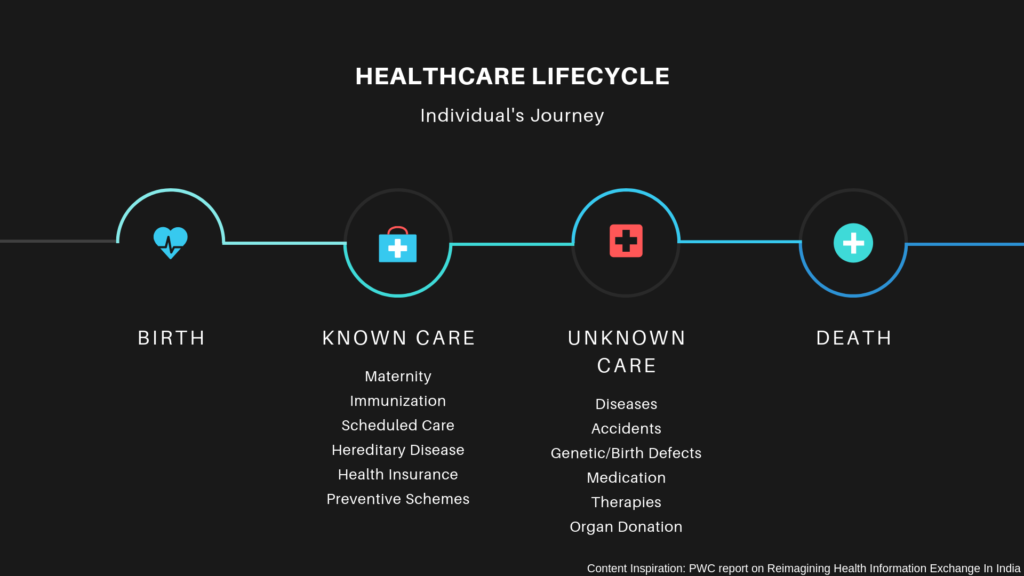
Use Case 1: Patient/Individual Registration
The success of any country in achieving the Universal Health Coverage (UHC) goals lies in its ability to map every citizen with the health information exchange. The essence of a truly interconnected system lies in its ability to keep patients/individuals at the heart of the system. Individual registration starts with the birth registration of an individual and ends with the death registration, covering every piece of healthcare information to be able to give a healthy living. This will enable a health information exchange to act as a single source of data reference around an individual’s health.
Every registration gets tagged to a unique ID. For Example, in the case of India, this ID could be UID or AADHAR number of any individual. In the case of developed nations, this could be the national identification number of an individual. Blockchain has a key role to play as a source to secure, authenticate, and share individual’s detail across the healthcare ecosystem.
Citizen’s contributions like blood donation, organ donation, social actions could be tagged to the unique ID. Likewise, government schemes, preventive care accessibility, insurance schemes, etc could also be tagged to the unique IDs. In essence, this will create a truly connected ecosystem and database.
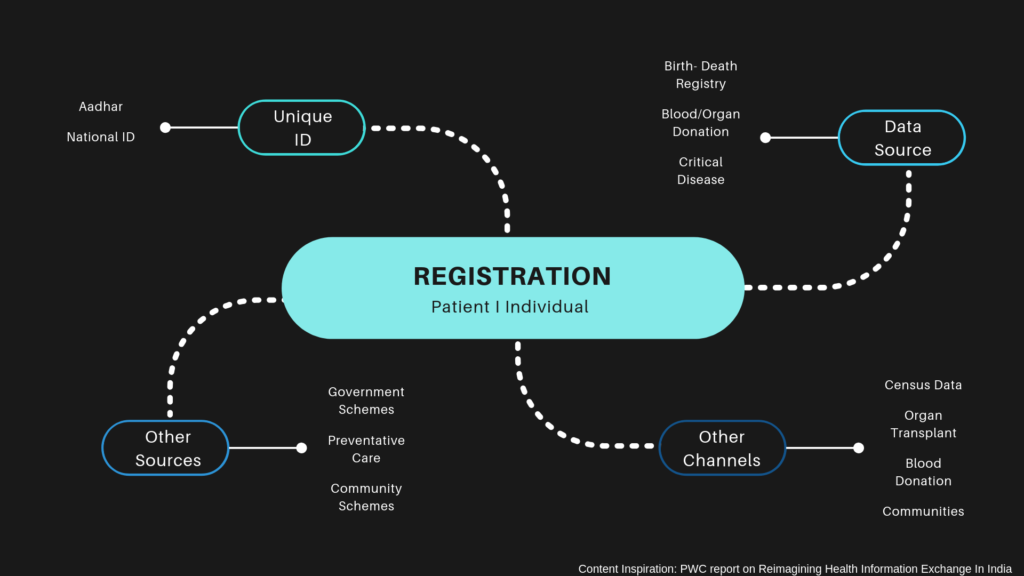
Use Case 2: Personal Health Record/Profile
The information age that we are living through has digitally enabled individuals to take control of their health & lifestyle. From smart wearables to blood glucose monitoring to following a nutrition plan, preventative care is slowly replacing the traditional care model. Healthcare is now personalized and individuals have full control over their day-to-day health data.
Personal health record/profile is about tagging the health information of individuals to their unique ID on the HIE. The input source of personalized health records will be smart wearables, vaccination history, disease profiles, clinical tests, and other vital information from hospital admission report.
Tagging health & healthcare data will have its own advantages for patients suffering from critical diseases or in times of calamities in a region. The benefit of maintaining a personal health record on a blockchain is two-fold as listed below:
- Confidentiality & Security of individual’s data
- Data sharing control in an individual’s hand
The health records saved over blockchain will be immutable and any new information could be added only after the patient’s approval. Alternately, approved entities (nodes) could be established to overwrite/update the patient’s health record or information on a case-to-case basis.
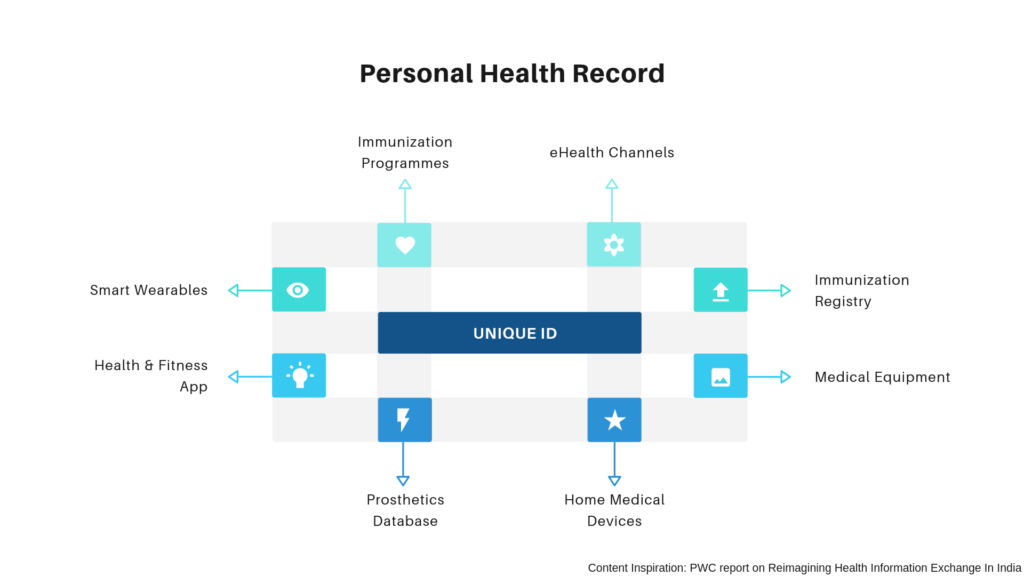
Use Case 3: Pharmacy & Medication
The counterfeit and black market for drugs has a direct impact on the availability/inventory management of critical care medicines. A digital ecosystem will not only help in validating the seller’s license but will also help in maintaining drug inventory by connecting the stakeholders- Hospitals, Clinics, Pharmacies, Manufacturers, etc – throughout the ecosystem.
Medication and pharmacy history will also help in eliminating the intermediaries that drive the government schemes at the grass-root level. Presence of intermediaries leads to scheme benefits not reaching the end patient in a way it should be. Unique patient’s ID will help in tagging the patients to specific schemes according to their need.
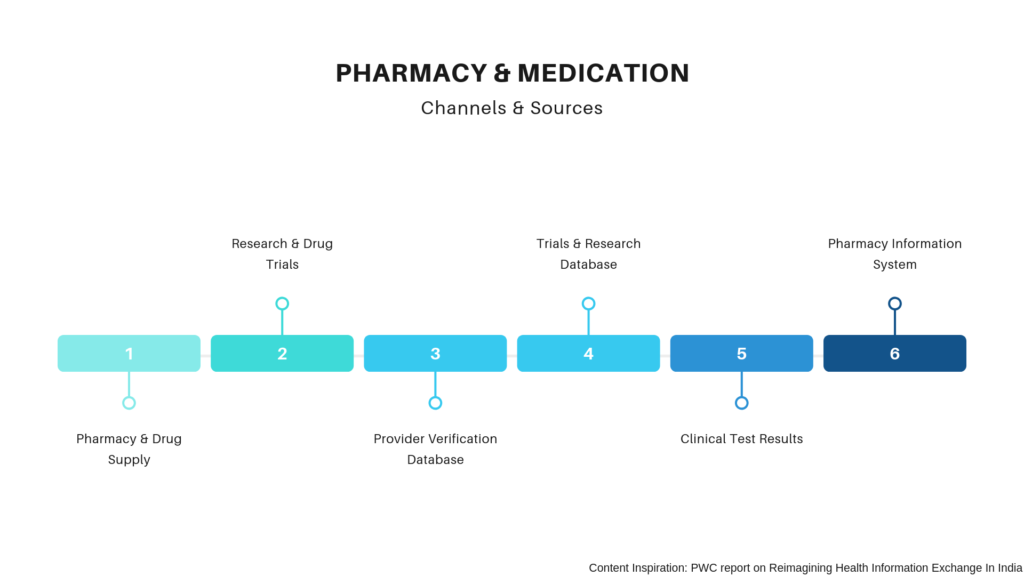
Use Case 4: Healthcare Provider
The existing model of healthcare delivery is provider-centric rather than patient-centric. Hospitals generate and store patient’s data at their own level than making it available to be shared across the ecosystem. Health Information Exchange (HIE), clubbed with blockchain, will make the ecosystem interoperable, improve data sharing among stakeholders, enhance data security, and enable patients to have control over their health data.
Tagging health data to the unique IDs will enhance the patient experience irrespective of the geographical location, optimize patient care, and enable patients to avail the government schemes & preventative care drives. One ID to track the patient’s health journey across the lifecycle has a massive value addition potential.
To further increase the quality of care and make it consistent across the providers, a feedback mechanism could be established between the stakeholders, keeping patients at the center of the activity.

Use Case 5: Healthcare Payer- Insurance & Schemes Management
Blockchain combined with IoT & AI has the potential to automate the claims processing. Unique ID driven HIE will help patients avail private insurance claims as well as public schemes against their health data. An integrated healthcare ecosystem will also help in saving time & cost involved in dealing with intermediaries & manual processes for claims processing.
One of the key issues surrounding public schemes & insurance companies is fraudulent claims through fake patients or false health records. HIE will solve this problem through the unique ID system.
A connected ecosystem will also ensure timely intervention in the case of grievances.
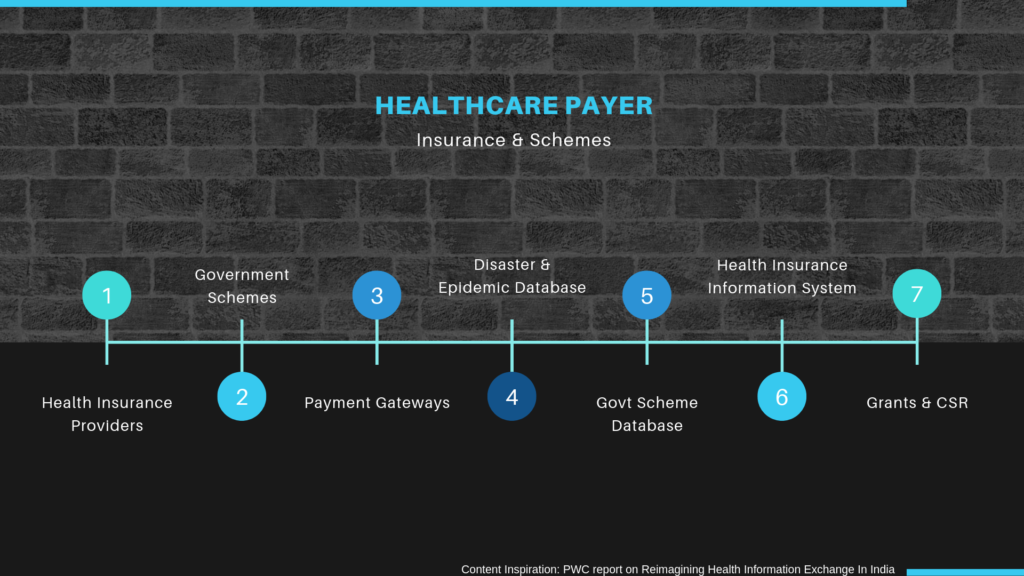
That’s all for now. In our next post read about “Mapping Patient Journey On A Health Information Exchange”, “Integrating Stakeholders Through The Health Information Exchange” and much more. Subscribe or Follow Us On LinkedIn

